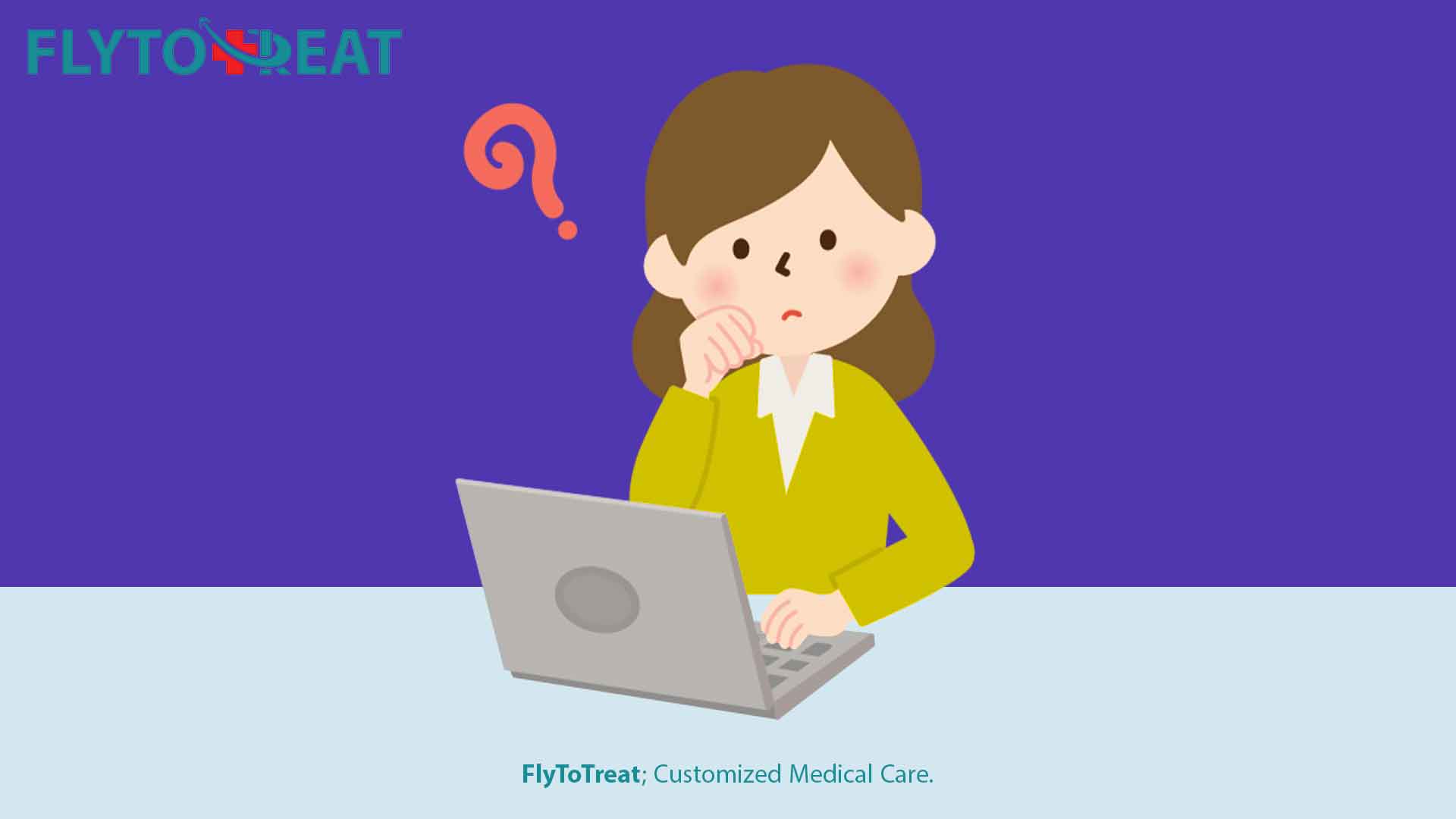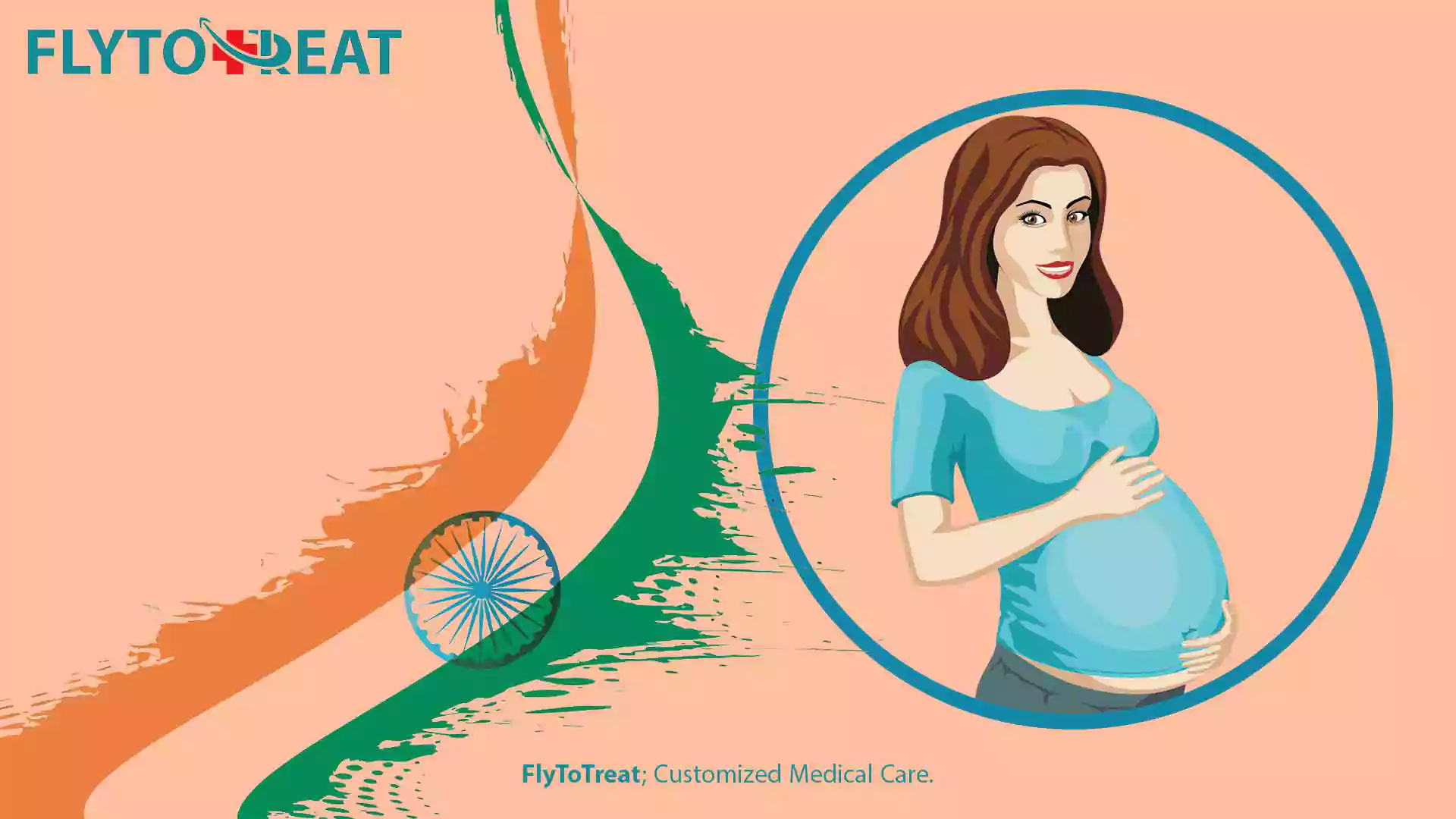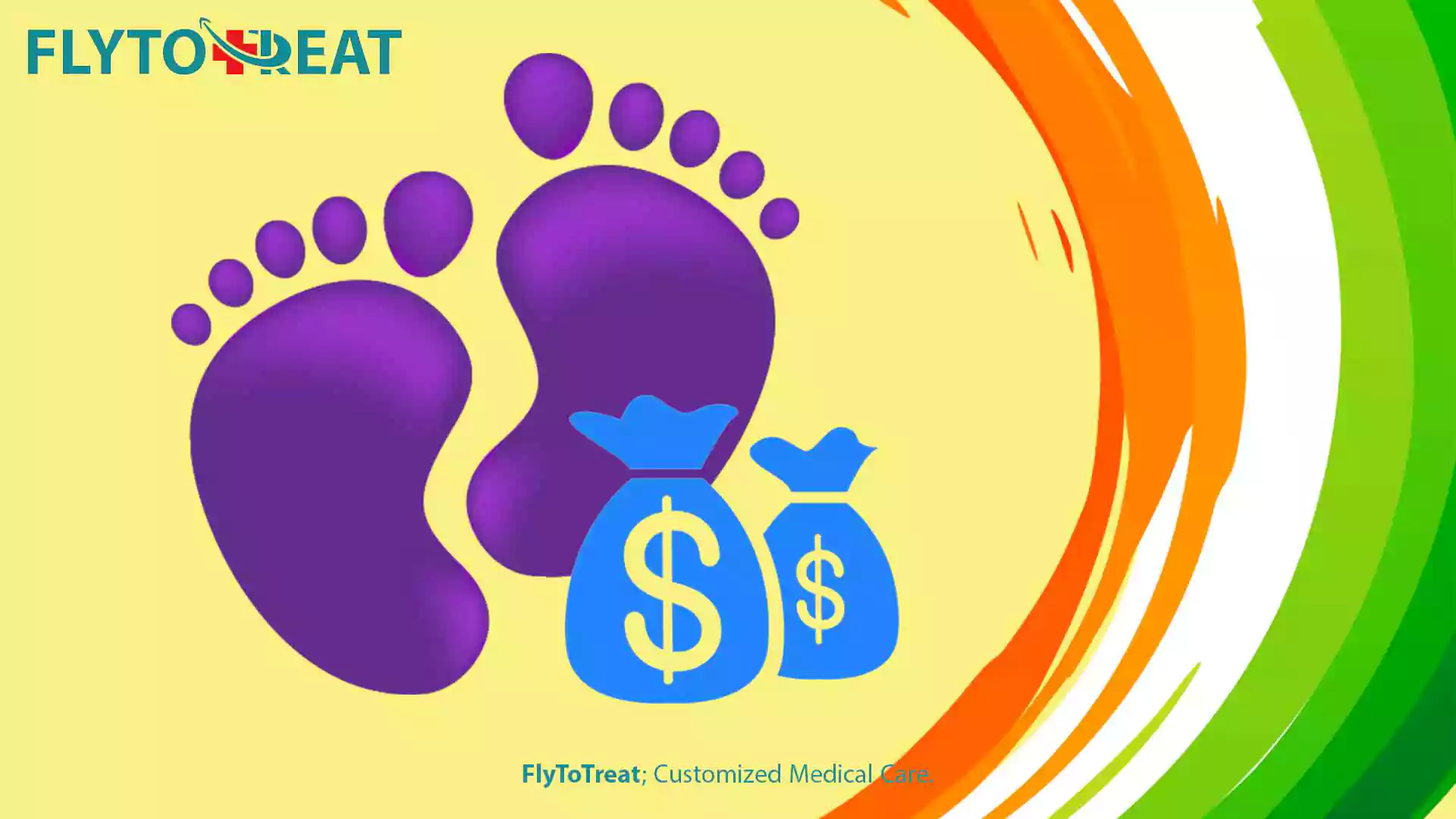
IVF (In Vitro Fertilization) in India
India is progressing in medical research and treatment along with keeping the patients’ satisfaction high in terms of cost and other health care services. In medical technology, India is a competitive country that has attracted many patients for treatment. IVF in India is a well-known medical service for those who look for infertility treatment.
India is professionally offering in vitro fertilization services to local and international couples. In this article, we are going to understand the term in vitro fertilization and why India is one of the popular countries for this medical service.
What is IVF?
In vitro fertilization or IVF in short is a type of assisted reproductive technology (ART) that helps fertilization happen in a laboratory and implants the produced embryo into the recipient’s uterus. Once the embryo implants in the uterus lining, the pregnancy starts. This process can be used with other assisted reproduction technologies such as intracytoplasmic sperm injection (ICSI), in vitro maturation (IVM), gamete donation, etc. (in India, using egg donation, sperm donation, embryo donation, and surrogacy are not allowed for international patients).
Each cycle of in vitro fertilization often takes 28 to 40 days. Typically, multiple cycles are needed before the positive result of pregnancy. Nevertheless, pregnancy could occur even on the first attempt. The IVF cycle starts with using medication to stimulate egg maturation. Once the doctor feels that enough eggs are mature, the egg retrieval process should be done. Then the eggs are combined with sperm under the monitor of the embryologist in a laboratory. The high-quality embryos will be selected to be transferred into the uterus and grow until the pregnancy comes to the full term.
It is important to note that in vitro fertilization does not guarantee pregnancy since each patient’s medical condition is different from the others; however, it will definitely increase the chance of pregnancy.
Who Needs IVF Treatment?
In vitro fertilization is one of the most common infertility treatments that has been responsible for the birth of more than one million babies all over the world. IVF was originally a treatment for women with blocked or missing fallopian tubes but it may be advised in different conditions now. In vitro fertilization can also be used along with other treatments. For instance, to avoid conceiving a baby with genetic disorders, IVF can be utilized with the preimplantation genetic diagnosis (PGD). In case of the following conditions, in vitro fertilization could be a useful option:
- Missing or non-functional fallopian tubes
- Endometriosis
- The risk of genetic disorders
- Age-related infertility
- Unexplained infertility
- Sperm problems
- Ovulation problems
- High levels of anti-sperm antibodies in blood
- Desire for gender selection
- Advanced maternal age
- Post-cancer fertility treatment
- Using frozen eggs or embryo
- When a gestational carrier (surrogate) is required
- Gay couples

Is There a Right Age for IVF Treatment?
The age of women is a very important factor in the success of the IVF process because as the woman ages, the success chance decreases. Artificial insemination has the highest success for women in their twenties and early thirties. As the woman gets to her mid-thirties, the chance of success is decreased.
If you are going to use an egg donor, then it is best to choose a young donor who preferably has donated before and has had a successful pregnancy. In case the patient insists on using her own ovum, the age limitation could be applied in the fertility clinic since many of them will not treat women over 46.
Thanks to medical advancement, it is now possible to get pregnant by using donor eggs even when the woman has reached menopause. In this case, she can carry and deliver a baby who is genetically related to her partner and has been raised in her own uterus. Of course, a fertility specialist should carefully check the physical and hormonal condition of the recipient as well in order to see if she is ready to host the baby for the 9 months of pregnancy.
How is IVF Procedure?
In vitro fertilization is a process that consists of multiple steps. The main steps of this process are discussed below.
Step 1: Ovarian Stimulation
As the first step, the woman needs to use medications in order to stimulate egg maturation. These drugs may be in the form of pills and ampules. In each menstrual cycle, one egg is matured and released to be ready for fertilization. However, in the IVF cycle more eggs are needed to make embryos of high quality. Therefore, the medications are used for ovaries stimulation to mature more eggs in one menstrual cycle. While you are receiving the medications, your follicles and hormones are evaluated through blood tests and ultrasound. Ovarian stimulation could be stopped if there is a risk for the ovarian hyper-stimulation syndrome.
Step 2: Egg Retrieval
Once your egg follicles are mature and ready, the egg retrieval process starts. Egg retrieval is a minor surgical procedure that will be carried out in a clinical environment. In this step, you will most probably be sedated via general anesthesia. Then a thin hollow tube will be inserted into the ovary under the ultrasound guidance. The needle is connected to a suction device pulling the matured eggs out of their follicles cautiously. After the egg retrieval, you should stay at the hospital until you are fully conscious and ready to go home. You may feel a little cramp or pressure following the egg retrieval procedure, but it will go away quickly.
Step 3: Sperm Retrieval
On the day of egg retrieval, the male partner should provide the semen sample needed for insemination. The semen sample will often be collected through masturbation; however, other assisted technologies like Testicular sperm aspiration (TESA), Testicular sperm extraction (TESE), Microepididymal sperm aspiration (MESA), etc. can be used in case of need. After the sperm sample is collected, it will be washed to improve its quality and increase the chance of fertilization.
Step 4: Fertilization
Fertilization of oocytes and sperm can happen by using different techniques that are summarized below.
Conventional insemination: in this method, the eggs and sperm will be combined in a special container in a laboratory environment. The insemination occurs naturally and an embryo will be produced.
Intracytoplasmic Sperm Injection (ICSI): in some cases when the sperm has low motility and cannot swim well to reach the eggs and fertilize them, or when the sperm number is low, the ICSI method can be a useful option. In this method, the sperm is injected into the egg to make fertilization happen easier.
In Vitro Maturation (IVM): in this technique, the eggs are harvested before they are fully matured and ready for insemination. In the IVM method, there is almost no need for hormonal shots to stimulate the egg maturation inside the body because the oocytes will be matured in a laboratory after they have been punctured.
Assisted Hatching: in this technique, the embryo’s surrounding membrane or zone pellucida is hatched so that the embryo will be implanted easier. In this method, a hole is made in the outer surface of the embryo before the transfer to assist it to hatch and implant in the uterus lining. Assisted hatching is suggested if you are of older ages, using frozen eggs or embryos (the membrane can get harder in this condition), or you have experienced multiple failed IVF cycles.
Step 5: Embryo Transfer
When 3-5 days have passed from the fertilization, the embryos can be transferred into the womb. Depending on the physical condition of the recipient, the proper number of embryos are implanted into the recipient’s uterus through a simple procedure. The embryo transfer procedure takes about 10 minutes and it does not need using anesthesia. The doctor inserts a thin catheter into the uterus through the cervix. Then the embryos will be injected into the uterus through the catheter.
After the transfer, it is better to rest and start your normal activities the next day. You may receive progesterone for the first 8-10 weeks to help the embryo survive easier. If the embryo attaches to the uterus lining, pregnancy happens. After 10-14 days, you can have a pregnancy blood test that shows whether or not you are pregnant.
What are IVF Complications?
In vitro fertilization is generally a safe procedure and the probable complications will go away quickly. However, knowing the side effects can reduce your stress after the procedure. The common side effects of this process are:
- Ovarian Hyper-stimulation Syndrome (OHSS): this syndrome happens when the ovaries respond to the stimulating hormones excessively and cause eggs to become swollen and painful. OHSS syndrome is a rare complication but it can be dangerous. In some cases, it is necessary to stop treatment and start over with a lower dose of medication.
- Multiple pregnancies: in the process of IVF, sometimes more than one embryo is transferred to the uterus, which increase the chance of having twins or triplets. Having more than one baby increases complications like miscarriage, blood pressure, pre-eclampsia, gestational diabetes, anemia, heavy bleeding, need for C-section, premature birth, low birth weight, etc. for both the mother and babies.
- Premature delivery and low birth weight: studies show that in vitro fertilization can increase the chance of multiple pregnancies and consequently the risk of premature delivery and low birth weight increases.
- Ectopic pregnancy: in vitro fertilization can increase the risk of having an ectopic pregnancy. This problem happens when the embryo implants inside the fallopian tubes instead of the uterus lining. As a consequence of ectopic pregnancy, you will experience pain and vaginal bleeding therefore pregnancy must be terminated. If your pregnancy test result is positive, you need to have an ultrasound in the sixth week and make sure the embryo is growing in the right place.
- Ovarian torsion: even though this is a rare side effect, it is a serious problem and needs quick medical attention. Ovarian torsion occurs when an ovary twists around its supportive tissues. The twist of ovary can cut off the flow of blood to the ovary and fallopian tube. This issue presents itself with severe abdominal and pelvic pain, nausea, vomiting, fever, an adnexal or pelvic mass, and abnormal bleeding. Ovarian torsion cannot affect fertility when the proper treatment occurs.
- Other possible complications: IVF may have other side effects that are all temporary and they go away after some days. These side effects are:
- Bloating
- Cramping
- Feeling sick or nausea
- Hot flashes
- Breast tenderness
- Mood swings
- Fatigue
- Constipation
- Headache
- Infection
- Emotional stress
- Allergic reactions to medications
Does IVF Guarantee a Definite Result?
Before proceeding with IVF treatment, you should know that this technology does not guarantee a 100% result and it depends on many factors. The most important factor is the age of the women because as they get older, the chance of successful pregnancy decreases. The other important parameters are the uterus and ovaries condition, quality of oocytes, quality of sperm, and biological and hormonal conditions. The average success rate of in vitro fertilization is 35% all over the world considering all the influencing factors.
In vitro fertilization usually needs more than one cycle for getting a positive result. For some patients, the process may not be effective at all. The studies show an increasingly positive result over the cycles. Typically, there is a 29% chance of successful live birth for the first try and it goes up to 43% by doing 6 cycles.

IVF Success Rate in India
There is no country-wide force to make the IVF clinics in India publish their success rate; therefore, the exact data is not that obvious. But by looking at the top 10 fertility centers in India, the range of in vitro fertilization success rate is between 52% to 70%. The clinics in India use modern techniques of assisted reproductive technologies and they are improving every day to increase the success rate for patients of different ages. In general, the IVF success rate in India is similar to other popular countries working in the field of infertility treatment.
Legal and Ethical Aspects of IVF in India
In the process of in vitro fertilization, often multiple embryos will be produced that may not be transferred to the uterus for growth. Maybe one of the most important ethical concerns about undergoing in vitro fertilization is what happens to the remaining embryos. You can have different options to do about the left embryos like donating your embryos to other couples who need it or donating them to a fertility center for scientific studies. You can also have your embryos frozen and kept for future use. If you do not like any of the mentioned options, you can discard the left embryos although one may consider this option unethical. Some people argue that an embryo is a human being whose life shall be protected from the first moment, while others say an embryo is too primitive to have human rights. Therefore, up to now, there are different ethical beliefs about the destruction of the embryos.
In vitro fertilization in India is regulated by the Indian Council of Medical Research and the union government of India allows the child born of IVF to enjoy all the rights of a natural biological child. Indian law has also made it mandatory to conduct tests (like PGS) to identify the genetic defects in the embryos and prevent having a child with genetic disorders. India recognizes the blood relationship and adoption, thus IVF does not pose any questions about parenting the child. However, egg donation, sperm donation, gender selection, and surrogacy are not allowed, especially for international patients.

IVF Cost in India
When talking about treatments like IVF, the cost is a very important subject. As we discussed before, there is often a need for multiple cycles before pregnancy. Typically, 2-3 cycles are needed until the desired result is achieved and for the older couples these attempts may need to be increased. The cost of treatment varies according to the city, and the fertility center. The average cost of IVF in India for each cycle is now 3500$ which is an affordable cost compared to American and European countries. Of course in the case of adding other procedures like ICSI and PGS, the final cost goes higher. No need to worry about the expenses! FlytoTreat will provide you the best IVF services in India at the most affordable costs. For getting more information, you can contact us all through the week free of charge.
The Bottom Line
In vitro fertilization is a technique that gives infertile couples a chance to experience parenthood. India is a well-known country with a professional team of physicians for infertility treatment and especially IVF, which has attracted many couples to this country. The well-equipped fertility centers and clinics, the use of modern technology, and the low cost of treatment are among the important reasons for choosing this country. In addition, communicating with local people is not difficult since most of them know English.
If you want to choose IVF in India, you do not need to worry about finding the best doctors and clinics. You can trust FlytoTreat in providing you with the best of whatever you need including transfer, accommodation, translator, etc. Contact us through the provided WhatsApp number and consult with FlytoTreat experts to get more information now because it is definitely worth trying.
MEDICALLY REVIEWED BY: Dr. Ali Bazazi
AUTHOR: FlytoTreat's team of Authors
20 June 2023 - Updated At: 19 January 2025
Related Articles
Comment





